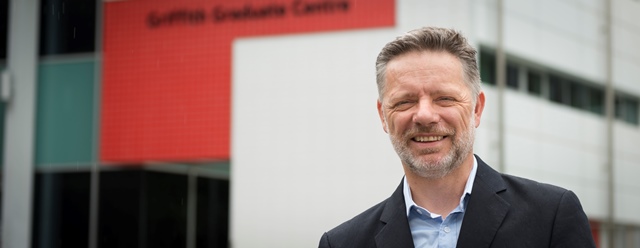
In an Australian first, Griffith University’s MBA program is taking the first step to help offset the effect of its greenhouse gas emissions.
Following a comprehensive assessment of its emissions between 2012 and 2013, a total of 433 tonnes of carbon dioxide equivalents were attributed to the MBA program. In an attempted to offset their usage, carbon credits were purchased from three Asian-based projects who support renewable energy and waste gas recovery.
The credits go towards a wind power project in India (194 credits), a small hydropower project in China (152 credits), and a gas recovery project in Indonesia (87 credits).
“This is an important move for the Griffith MBA as it is a move consistent with the core values of our MBA program,” Griffith MBA Director and Associate Professor Nick Barter said.
“In selecting projects in India, China and Indonesia we engaged with three major Asian economies as is congruent with the program’s Asia-Pacific focus,” he said.
Associate Professor Barter believes the Griffith MBA is setting itself apart through their new initiative and by following the school’s three core values – responsible leadership, sustainable business practice, and global orientation.
“Climate change is happening and it is crucial that we all face up to its reality,” he said.
“By offsetting the impact of out carbon emissions, we are showing the type of leadership we want to imbue in our students. It is a tangible, meaningful move to mark the build-up to the climate change conference at the end of the year,” Associate Professor Barter said.
Pangolin Associates carried out the 12-month assessment of the Griffith MBA, finding that Utilities accounted for the largest portion producing 361.1 tonnes of carbon dioxide equivalents. Electricity (83.4%), internet and telecommunications also significantly contributed.
Using equivalent measurements, the report revealed that electricity used in MBA operations was the equivalent of 127 tonnes of coal combusted in the same year. Energy consumed through stationary and transport sources were calculated to be the equivalent of 18 barrels of oil combusted in that year.
With the assessment pinpointing the MBA’s largest areas of emission contribution, they were able to propose an Emissions Management Plan.
“It’s our plan to audit the operations of the MBA going forward and to continue to offset appropriately while also finding ways and implementing strategies to reduce our carbon footprint,” Associate Professor Barter said.
“We have embraced the idea of an Emissions Management Plan and out next stops will be to set up a carbon reduction target, and embed carbon and energy management systems in the workplace and through the operations of the program.”
As well revealing which areas emitted the most carbon dioxide, a range of suggestions for improved energy usage was also included in the report. These included renewable energy sources, using video-conferencing to cut travel, using higher energy-rated equipment, online methods for payment and communications, and fitting more energy efficient lighting.
“Stakeholders of organisations, governments, and the general public are increasingly calling for corporate disclosure of greenhouse gas information,” Associate Professor Barter said.
“The best way to influence the behaviour of others is set to an example. A good policy is to encourage all staff members to think green by applying greener and more energy efficient methods in the workplace.”










